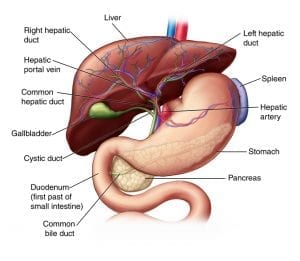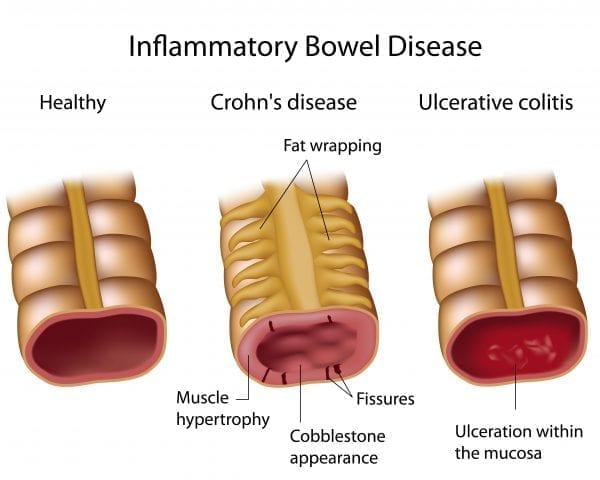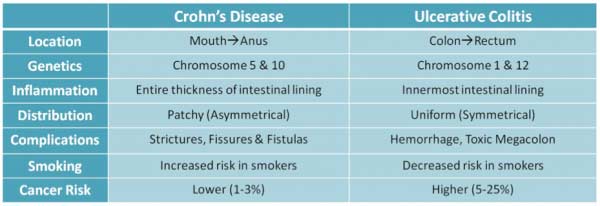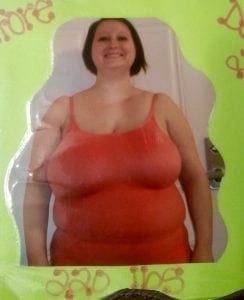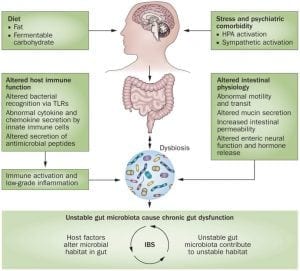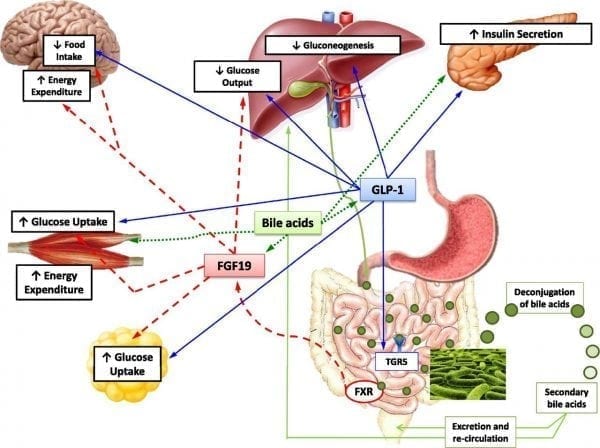Is Weight Loss Important Before Weight loss Surgery?
June 21, 2016 7:52 am
The question of “Is a pre operative diet and weight loss important?” No. This is the short answer. In a previous blog, “Weight Loss Before Weight Loss Surgery?” I have gone into further detail about why I don’t require a pre operative diet and weight loss program.
More recently there has been a concerted effort by a number of major health plans to require 3-6 months documented pre operative diet attempt prior to authorization for weight loss surgery. Furthermore, there are surgeons who would mandate a 10% weight loss as a precondition for the patient to have a weight loss surgery, laparoscopic sleeve gastrectomy for example. The overwhelming scientific literature fails to support any direct correlation between preoperative weight loss and the outcome of the weight loss surgery.
Some surgeons require preoperative weight loss as a way to reduce the size of the liver. I’ve personally have never met a liver I couldn’t work around unless it was severely diseased.
There is some literature to support this position. However, one has to critically look at all the studies. Almost all the studies have very specific population and procedures that are being looked at. Most often the recommendations had been made for adjustable gastric banding procedures. There are also some that are recommending the same for Lap Sleeve cases only siting the reduction of the liver size as a reason for the Very Low Energy Diet as a precondition to surgery. It is, however, important to remind ourselves that there is no long term studies whatsoever that show any relationship between the preoperative weight loss and the outcome of any weight loss surgery.
Why “Diets do not Work?
June 17, 2016 6:24 am
The question of “Is a pre operative diet and weight loss important?” No. This is the short answer. In a previous blog, “Weight Loss Before Weight Loss Surgery?” I have gone into further detail about why I don’t require a pre operative diet and weight loss program.
More recently there has been a concerted effort by a number of major health plans to require 3-6 months documented pre operative diet attempt prior to authorization for weight loss surgery. Furthermore, there are surgeons who would mandate a 10% weight loss as a precondition for the patient to have a weight loss surgery, laparoscopic sleeve gastrectomy for example. The overwhelming scientific literature fails to support any direct correlation between preoperative weight loss and the outcome of the weight loss surgery.
Some surgeons require preoperative weight loss as a way to reduce the size of the liver. I’ve personally have never met a liver I couldn’t work around unless it was severely diseased.
There is some literature to support this position. However, one has to critically look at all the studies. Almost all the studies have very specific population and procedures that are being looked at. Most often the recommendations had been made for adjustable gastric banding procedures. There are also some that are recommending the same for Lap Sleeve cases only siting the reduction of the liver size as a reason for the Very Low Energy Diet as a precondition to surgery. It is, however, important to remind ourselves that there is no long term studies whatsoever that show any relationship between the preoperative weight loss and the outcome of any weight loss surgery.
First Step
June 15, 2016 2:17 pm
First Step

Diet Soda, Diabetes and Weight Loss Surgery
June 14, 2016 7:02 pm
Our practice has long discouraged the consumption of diet soda and carbonated sugary beverages for anyone, but especially our weight loss surgical patients. These products’ detrimental effects on bone health, gut microbiome, increase appetite, diarrhea, inhibited weight loss and regain shouldn’t be ignored. In addition, in the situation of limited space post Bariatric surgery, a WLS patient needs nutrient rich, protein foods. These beverages provide no nutritional value.
In addition, these products are also not recommended for non-WLS patients. Oral health, peak in insulin levels, increase weight gain, increased Type 2 DM, and diarrhea are also issues that can effect patients in addition to the above issues.
Our practice, as well as a recent article on Medical News Today Written by Jon Johnson, encourages people to:
“Saying goodbye to diet soda
Soda, whether regular or diet, is a dietary waste. Sodas have little nutrients, and have a long list of side effects. For people with diabetes, diet soda has been associated with weight gain and symptoms of metabolic syndrome. Some sweeteners in diet soda even cause sugar and insulin spikes in the blood.”
We encourage the use of Stevia, which is a natural sweetener, instead of other artificial sweeteners. Stevia is a herb type plant with leave that can be used for sweetening. It has been used for many years in other countries and cultures. It contains Magnesium, Potassium, zinc, Vitamins A, B3 and C as well as fiber.
A past blog post on Carbonated Beverages and Weight loss Surgery .
Crohn’s Disease and Ulcerative Colitis
June 07, 2016 6:33 am
Crohn’s Disease and Ulcerative Colitis are two disease processes that effect the large intestine to varying degrees and in the case of Crohn’s possibly part of the small intestines. Both fall under the category of Inflammatory Bowel Disease however there are differences between Crohn’s Disease and Ulcerative Colitis even though they may share some symptomatology.
Crohn’s Disease (CD) is an inflammatory bowel disease (IBD) that causes deep tissue inflammation of the digestive lining tract. It affects the gastrointestinal (GI) tract, extending from the mouth to the rectum. CD has an asymmetrical progression, where it does not affect the entire tract uniformly (1). It is commonly found at the end of the small bowel (ileum) to the start of the large bowel (colon).
Complex interactions between three factors contribute to the occurrence of CD:
- Immune Response: Foreign environmental substances may elicit an overactive immune response. T-cell mediated immune response identifies threatening affluences and works to protect the body. This stimulates inflammation, often times without control, in the body as the body’s natural defense mechanism (2,3).
- Inherited Genes: Variation in genes that produce proteins involved in immune function may disrupt intestinal cell’s ability to respond normally to bacteria. Studies also show genetic deviation in chromosomes 5 and 10, which contain IBD loci. Alterations at this locus may lead to the increased risk of CD.
- Environmental Factors: Factors such as smoking, those between the ages of 10-40 yrs. (commonly diagnosed before 30 yrs.), diets high in sugar/sweeteners, fats/oils, and total fat may lead to the increased risk of developing CD.
Common symptoms of CD include frequent diarrhea, rectal bleeding, fatigue, fever, weight loss, reduced appetite, abdominal pain/cramps, and fever. Inflammation in CD is unevenly widespread throughout the GI tract. Inflammation in the mouth, esophagus, and stomach can lead to ulcers. However, they are rather uncommon. Inflammation in the small intestine, colon, and rectum may lead to ulcers as the severity increases (5). The complications in CD are due to chronic inflammation, which may lead to:
- Intestinal narrowing (stricture)
- Abscess: collection of pus
- Fistula: abnormal connection or tract
- Colon Cancer
- Other disorders such as anemia, osteoporosis, gallbladder/liver disease, etc.
Antibiotics, anti-inflammatories, corticosteroids, and immunomodulators have been proven to regulate the mechanisms of CD. Surgical treatment may also benefit the patient. There are several surgical options that may be performed depending on the symptoms and findings.
- Strictureplasty
- Resection
- Proctocolectomy or Colectomy
There is no known cure for Crohn’s Disease; however these treatment options may control it.
Ulcerative Colitis (UC) is an inflammatory bowel disease (IBD), which results in damaging inflammation of the colon and rectum. It effects 700,000 men and women in the United States. As opposed to Crohn’s Disease, UC spreads evenly throughout the colon and rectum only (9). It does not affect the entire GI tract.
Like CD, Ulcerative Colitis occurs through a complex interaction of three factors:
- Immune Response: T cells (lymphocyte) mature and function in identifying foreign substances to then defend the body against infection.
- Inherited Genes: Variation in genes that protect intestinal function are more likely to respond abnormally to bacteria. Studies show genetic deviation in chromosomes 1 and 12 (11).
- Environmental Factors: Factors such as those between the ages of 1-30 yrs. or exposure to isotrentinoin (vitamin A derivative) may be at risk for UC.
Common symptoms of UC include bloody diarrhea, abdominal pain, weight loss, reduced appetite, fatigue, and fever. Inflammation in UC is evenly spread, yet restricted between the colon and rectum (10). Inflammation in the right (ascending), transverse, left (descending), sigmoid colons, and rectum can lead to ulcers that vary in size and depth (red, bloody, swollen). The complications of UC are due to prolonged inflammation, which can lead to:
- Increased risk of blood clots
- Colon Cancer
- Other disorders such as osteoporosis, liver disease, etc.
Antibiotics, anti-inflammatories, corticosteroids, and immunomodulators have been proven to normalize the mechanisms of UC. There is no cure for Ulcerative Colitis, but these treatment options may help regulate it.
It is important to have a coordinated team of medical professionals to develop an ongoing and dynamic treatment plan as well as surveillance for side effects of CD and UC. Patients can lead a productive life regardless of the challenges of CD and UC with appropriate medical treatment.
References
- Westall, F. C. (2006). Integrating theories of the etiology of Crohn’s disease on the etiology of Crohn’s disease: questioning the hypotheses. William M. Chamberlin, Saleh A. Naser Med Sci Monit, 2006; 12 (2): RA27-33. Medical Science Monitor, 12(5), LE5-LE6.
- Folwaczny, C., Glas, J., & Török, H. P. (2003). Crohn’s disease: an immunodeficiency?. European journal of gastroenterology & hepatology, 15(6), 621-626.
- Braat, H., Peppelenbosch, M. P., & Hommes, D. W. (2006). Immunology of Crohn’s disease. Annals of the New York Academy of Sciences, 1072(1), 135-154.
- Canavan, C., Abrams, K. R., Hawthorne, B., Drossman, D., & Mayberry, J. F. (2006). Long‐term prognosis in Crohn’s disease: factors that affect quality of life. Alimentary pharmacology & therapeutics, 23(3), 377-385.
- Talbot, R. W., Heppell, J., Dozois, R. R., & Beart, R. W. (1986, February). Vascular complications of inflammatory bowel disease. In Mayo Clinic Proceedings (Vol. 61, No. 2, pp. 140-145). Elsevier.
- Eaden, J. A., Abrams, K. R., & Mayberry, J. F. (2001). The risk of colorectal cancer in ulcerative colitis: a meta-analysis. Gut, 48(4), 526-535.
- Colitis–Pathophysiology, U. (2003). Inflammatory bowel disease part I: ulcerative colitis–pathophysiology and conventional and alternative treatment options. Alternative medicine review, 8(3), 247-283.
- Greenstein, A. J., Janowitz, H. D., & Sachar, D. B. (1976). The extra-intestinal complications of Crohn’s disease and ulcerative colitis: a study of 700 patients. Medicine, 55(5), 401-412.
- Lennard-Jones, J. E. (1989). Classification of inflammatory bowel disease. Scandinavian Journal of Gastroenterology, 24(sup170), 2-6.
- Gillen, C. D., Walmsley, R. S., Prior, P., Andrews, H. A., & Allan, R. N. (1994). Ulcerative colitis and Crohn’s disease: a comparison of the colorectal cancer risk in extensive colitis. Gut, 35(11), 1590-1592.
- Silverberg, M. S., Cho, J. H., Rioux, J. D., McGovern, D. P., Wu, J., Annese, V., … & Barmada, M. M. (2009). Ulcerative colitis–risk loci on chromosomes 1p36 and 12q15 found by genome-wide association study. Nature genetics, 41(2), 216-220.
Weight Loss Surgery Effects On Iron AbsorptionExclusive Member Content
June 06, 2016 9:40 am
Shared Success Story Update- Cyndi RNY to Duodenal Switch
June 06, 2016 6:37 am
Three Years Out Cyndi E … RNY to Duodenal Switch Revision
The Journey to get to the three year mark, has been amazing! And truly, The JOY is in the JOURNEY.
I am a JOYFUL “Third Time’s the Charm Revisionista”…. This is my new title…. And I say this proudly!!
For too many years (like 45! at least) I carried the shame and blame of being overweight and beat myself up on the inside. I tried everything, from age 13. I tried every diet, every program, and yes, I will say it, I have had THREE, yes THREE surgeries. And then, I let others convince me, and I bought into this, that I was a failure… BUT, I am not a failure. Surgery fails. For a long time, I could not say that, again with the SHAME word. BUT, I am done with shame, and I am done with blame. I no longer blame myself and I no longer shame myself or my body, because now, she and I, my body and I, are friends, and we are nice to each other.
Thankfully for me, I was in the right place at the right time, and met Dr. Ara Keshishian… My story with Dr. Keshishian, is simple. Dr. K was the first Doctor that did not blame me for my weight. He explained that each weight loss surgery has different measures of success, and percentages by weight loss surgery and outcomes. He educated me. He did not blame or shame me, he encouraged me. He also did an Endoscopy and found that I has a Gastro-Gastric Fistula. Simply put, this was an abnormal connection between the bypassed stomach and the small pouch created by the RNY Gastric Bypass surgery. Food could travel two ways, thus rendering the Gastric Bypass ineffective causing weight gain.
Dr. Keshishian performed my revision from RNY to Duodenal Switch on May 31, 2013. The procedure corrected my anatomy, enabling me to lose weight and regain my health. I have no complications, no issues post surgery.
Today, being a “Three Year Old” RNY to Duodenal Switch revisionista, I have a better perspective as a relative “newbie”. I am not a prisoner of my weight. I have lost 125-130 pounds, I am 5’12” (6 feet lol) 61 years old and for the first time in my life at a NORMAL WEIGHT! I do not fear, any longer, that I will gain my weight back. I am, however, mindful that I am consistent in my new habits and patterns that I have put in place, that keep me on track. I am also accountable. To myself, also to my Weight Loss Support Group, here in Paso Robles, to some fellow DS girlfriends that
I talk with about challenges, and with Dr. Keshishian. I am not held captive by my limitations, or my weight, and now I live with the possibilities each day brings and the fun challenges I put in front of me to conquer.
To the “newbies” I say, please take your time, treat yourself kindly, with your inner voice. This is not a race, this is a journey. Don’t rush, it’s ok to take it slow, listen to your body. And do not compare your journey to anyone else. You are you! You do you! You can do this well, one day at a time. Listen to the sage advice of those who went before you. We too have learned by trial and error. Be willing to sacrifice in the short term, for the gift of the long term life. Your DS is forgiving, you be forgiving as well!!!
Remember: WATER, PROTEIN, SUPPLEMENTS, EVERYTHING ELSE, EAT CLOSE TO THE DIRT, ELMO DIET
With JOY, Cyndi
Shared Success Story- Heidi
June 02, 2016 7:59 am
My name is Heidi and this is my weight loss journey. I had been struggling with my weight for years and was actively researching different surgical procedures available. I was also trying everything to lose the weight on my own. My wake up call to take action was one night when my husband said, “I’m worried about you and want you around for a long time.” I knew I had to do something. If someone loved me that much I needed to love myself enough to change.
So the very next day I made an appointment with my Primary Care Physician who recommended Dr. Ara Keshishian. That afternoon I called Dr. Keshishian’ office, scheduled a consultation and began what was about to be one of the greatest journeys of my life. I was approved within a month and ready to go.
In 2012, I had my Duodenal Switch with the great Dr. Keshishian. I was hopeful post op and determined to succeed. I knew with my husband’s and family’s love and support I could do it. I wanted to lose the weight for me, my husband and our future children so they had the healthy, happy mom they deserved. My Surgery weight was 220 ( Started at 230) I reached my goal at 10 months post op at 125lbs. Since having my DS I have had 1 (almost 2) amazing son’s. Duodenal Switch made this possible. I have my older son and I am currently 8 months pregnant with my 2nd son. Duodenal Switch did not just allow me to lose the weight that kept me from living life but it allowed me to get healthy and live life to the fullest. I am grateful everyday for my DS, my amazing husband, my boys, and Dr. Keshishian.
I am simply blessed. Would I do it again? In a heart beat.
Starting weight- 230
Surgery weight- 220
Goal Weight- 125
Current-130
Probiotics and Prebiotics
May 26, 2016 1:59 pm
Probiotics and Prebiotics are an important part of our overall general and gastrointestinal health. The gastrointestinal (GI) tract is a large, muscular tube that allows the digestion of food. The intestinal lining of the tract plays a role in absorbing vital nutrients and acts as a barrier for the macromolecules and microorganism from circulation. Our GI system is exposed to many bacterial agents that undergo fermentation in the mucosa. The type of fermentation carried out in the gut is greatly influenced by the types of bacteria found in the lumen.
The GI microflora is an elaborate ecosystem consisting of neutral and beneficial bacteria whose balance impacts overall health. This microenvironment consists of about 400 different bacterial species that make up approximately 100 billion organisms in the gut. The flora functions in nutrient consumption, vitamin production, detoxification, hormone activity, and other regulatory processes. Abnormal microbial balance or colonization results in dysbiosis, where the deviant nature of bacteria may become pathological (7). Dysbiosis is a contributing factor to many degenerative and chronic diseases.
Benefits of Probiotics and Prebiotics:
Our bodies are full of both good and bad bacteria. Probiotics contain live bacteria and yeasts, whose activity is beneficial when present in appropriate amounts (11,12). These helpful microorganisms regulate the body’s systems in several ways:
- Gastrointestinal: Probiotics work to reduce infectious diarrhea, specifically types identified by antibiotic use (1). Certain strains enhance stool consistency and bowel movement frequency. Probiotics have also proven effective in alleviating bloating and gas found in irritable bowel syndrome (9). Further studies suggest that specialized strains aid in milder forms of ulcerative colitis, an inflammatory bowel disease. A recent Russian study suggested eradication of SIBO and IBS using a combination of Bifidobacterium bifidum, Bifidobacterium longum, Bifidobacterium infantis and Lactobacillus rhamnosus, called Florasan-D available in Russia. These findings were presented at the 2015 Gut Microbiota for Health World Summit in Barcelona, Spain by Elena Polouektova, MD, a researcher at I.M. Sechenov First Moscow State Medical University.
- Weight Loss: A clinical study (8) revealed reduced body fat in patients who consumed yogurt (probiotic source), although there were no observed changes in weight. Another study, published in the 2011 European Journal of Clinical Nutrition (6), found that subjects who consumed fermented milk that contained a specific bacterial strain observed abdominal fat and weight loss, when compared to subjects drinking a control.
- Immunity: Although the clinical implications of this evidence are still being studied, it has been found that immune response strength is greatly improved through certain strains of probiotics (2,4). They have also been shown to lighten hypersensitivity reactions and normalize added mucosal dysfunction.
- Other Uses: Bacteria also reside in the mouth. Probiotics play an essential role in oral health, where they reduce throat infection, bad breath and periodontal disease, a gum infection (5). There have been claims that probiotics lower the effects of some skin conditions, prevent colon cancer, lower blood pressure and cholesterol, and alleviate anxiety and depression (3). Future studies are working towards the consistency of these claims.
Probiotics regulate the movement of food through the digestive system. They help replace unwanted bacteria and maintain the mucosal microenvironment to avoid dysfunction. Prebiotics are fiber compounds that move through the GI tract undigested. Prebiotics are important in stimulating probiotic growth and maintaining a stable environment for their optimal activity (13). The best way to get all the powerful benefits of probiotics is through consuming foods that are prepared by bacterial fermentation. Supplements are also available. Previous blog regarding probiotic supplements here. Previous blog regarding probiotics, C.Diff and Hyperoxaluria here.
Written by: Mariam Michelle Gyulnazaryan & Dr. Ara Keshishian
References
- Bowen, J. M., Stringer, A. M., Gibson, R. J., Yeoh, A. S., Hannam, S., & Keefe, D. M. (2007). VSL# 3 probiotic treatment reduces chemotherapy-induced diarrhoea and weight loss. Cancer biology & therapy, 6(9), 1445-1450.
- Chiang, B. L., Sheih, Y. H., Wang, L. H., Liao, C. K., & Gill, H. S. (2000). Enhancing immunity by dietary consumption of a probiotic lactic acid bacterium (Bifidobacterium lactis HN019): optimization and definition of cellular immune responses. European journal of clinical nutrition, 54(11), 849-855.
- Foster, J. A., & Neufeld, K. A. M. (2013). Gut–brain axis: how the microbiome influences anxiety and depression. Trends in neurosciences, 36(5), 305-312.
- Isolauri, E., Sütas, Y., Kankaanpää, P., Arvilommi, H., & Salminen, S. (2001). Probiotics: effects on immunity. The American journal of clinical nutrition, 73(2), 444s-450s.
- Krasse, P., Carlsson, B., Dahl, C., Paulsson, A., Nilsson, A., & Sinkiewicz, G. (2005). Decreased gum bleeding and reduced gingivitis by the probiotic Lactobacillus reuteri. Swedish dental journal, 30(2), 55-60.
- Merenstein, D., Murphy, M., Fokar, A., Hernandez, R. K., Park, H., Nsouli, H., … & Shara, N. M. (2010). Use of a fermented dairy probiotic drink containing Lactobacillus casei (DN-114 001) to decrease the rate of illness in kids: the DRINK study A patient-oriented, double-blind, cluster-randomized, placebo-controlled, clinical trial. European journal of clinical nutrition, 64(7), 669-677.
- Myers, S. P. (2004). The causes of intestinal dysbiosis: a review. Altern Med Rev, 9(2), 180-197.
- Omar, J. M., Chan, Y. M., Jones, M. L., Prakash, S., & Jones, P. J. (2013). Lactobacillus fermentum and Lactobacillus amylovorus as probiotics alter body adiposity and gut microflora in healthy persons. Journal of functional foods, 5(1), 116-123.
- Prantera, C., & Scribano, M. L. (2009). Antibiotics and probiotics in inflammatory bowel disease: why, when, and how. Current opinion in gastroenterology, 25(4), 329-333.
- Reid, G., Jass, J., Sebulsky, M. T., & McCormick, J. K. (2003). Potential uses of probiotics in clinical practice. CLINICAL microbiology Reviews, 16(4), 658-672.
- Rolfe, R. D. (2000). The role of probiotic cultures in the control of gastrointestinal health. The Journal of nutrition, 130(2), 396S-402S.
- Sanders, M. E. (2008). Probiotics: definition, sources, selection, and uses. Clinical Infectious Diseases, 46(Supplement 2), S58-S61.
- Schrezenmeir, J., & de Vrese, M. (2001). Probiotics, prebiotics, and synbiotics—approaching a definition. The American journal of clinical nutrition, 73(2), 361s-364s.
Weight loss Surgery for Treatment of Diabetes
May 25, 2016 7:21 am
New guidelines and recommendation are coming out of the second Diabetes Surgery Summit in the Fall of 2015. One major change is Metabolic or Weight Loss Surgery for the treatment of Diabetes. With all the advances made in newer classes of medication for treatment of diabetes, the majority of patients who are being treated fail to get to achieve the desired results of lowered blood glucose level. This is in contrast where weight loss surgical procedures such as Duodenal Switch can results in >95% cure rate of type II diabetes.
The American Diabetes Association has made the recommendation for weight loss surgical procedures be considered as a treatment option for type II diabetes.
Summarizing their criteria “According to the new Guidelines, metabolic surgery should be recommended to treat type 2 diabetes in patients with Class III obesity (BMI greater than or equal to 40 kg/m2), as well as in those with Class II obesity (BMI between 35 and 39.9 kg/m2) when hyperglycemia is inadequately controlled by lifestyle and medical therapy. It should also be considered for patients with type 2 diabetes who have a BMI between 30 and 34.9 kg/m2 if hyperglycemia is inadequately controlled, the authors agreed. The Consensus S
tatement also recognizes that BMI thresholds in Asian patients, who develop type 2 diabetes at lower BMI than other populations, should be lowered 2.5 kg/m2 for each of these categories. ”
This is a remarkable change in thought and policy on diabetic treatment and long term strategies that can only improve patient outcomes. Stabilization and blood glucose hemostasis can only improve patient health, health care utilization and health care costs.

